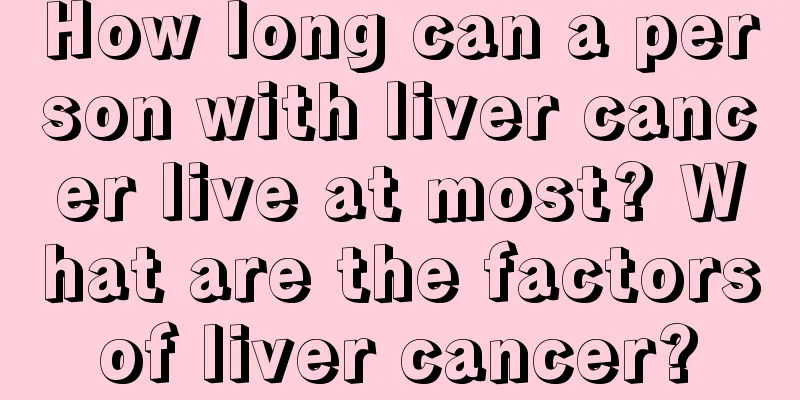How to treat acute pancreatitis

|
Pancreatitis is a common clinical disease, and acute pancreatitis is also a type of pancreatitis. The onset of acute pancreatitis is relatively rapid, with obvious symptoms of abdominal pain and bloating. Early treatment is recommended for this disease. The clinical manifestations of acute pancreatitis vary in severity, and the severity of the symptoms must also be considered in treatment. So how should acute pancreatitis be treated? 1. Fasting and nasogastric tube decompression Continue gastrointestinal decompression to prevent vomiting and aspiration. Giving whole-body motility drugs can reduce abdominal distension. 2. Replenish body fluids To prevent and treat shock, all patients should be given intravenous fluid, electrolyte and heat supplementation to maintain circulatory stability and water-electrolyte balance. Prevent hypotension and improve microcirculation. 3. Antispasmodic and analgesic For those with a clear diagnosis, symptomatic analgesics can be given in the early stages of the disease. However, it is advisable to give antispasmodics at the same time. Morphine is contraindicated to avoid spasm of the sphincter of Oddis. 4. Inhibit pancreatic exocrine secretion and pancreatic enzymes Gastric tube decompression, H2 receptor blockers, anticholinesterase drugs, somatostatin, etc. are generally used for patients with more serious conditions. Trypsin inhibitors such as aprotinin and gabexate have a certain inhibitory effect on trypsin. 5. Nutritional support Fasting in the early stage, mainly relying on total parenteral nutrition (TPN). When the abdominal pain, tenderness and intestinal obstruction symptoms are relieved, you can resume eating. Except for patients with hyperlipidemia, fat emulsion can be used as a heat source. 6. Application of antibiotics Early antibiotic treatment. In severe pancreatitis complicated by pancreatic or peripancreatic necrosis, intravenous administration of broad-spectrum antibiotics or selective enteral administration of antibiotics can prevent bacterial infection caused by intestinal flora translocation. 7. Surgery Pancreatic abscess, pancreatic pseudocyst, and pancreatic necrosis with infection are serious life-threatening complications of acute pancreatitis. If the diagnosis is uncertain; there is secondary pancreatic infection; there is concurrent biliary disease; or the clinical symptoms continue to worsen despite reasonable supportive treatment, surgical treatment should be performed. |
<<: What are the symptoms and treatments for acute urinary retention?
>>: How to relieve anal itching?
Recommend
How to wash your hair with cypress leaves?
Cypress leaves are often used in traditional Chin...
What should I do if I suffer from severe hair loss?
What should you do if you are suffering from seve...
What are the folk remedies for lung cancer? 4 folk remedies have therapeutic effects on lung cancer
Lung cancer is a very serious disease that is ver...
Recommended major hospitals for osteosarcoma surgery
Hospitals are trusted by every patient seeking me...
What are the precautions for leptospirosis?
Many people's bodies are troubled by various ...
Does chocolate refresh you?
Chocolate is a kind of dessert that people like t...
Why do my thigh muscles ache when I don't exercise?
We all know that muscles will ache the day after ...
What is the reason for the throbbing of the philtrum?
There are many acupoints distributed on our body,...
Fasting refers to how long you don't eat
Fasting refers to 4 to 5 hours after a meal, whic...
Okra can also be soaked in water and drunk, these benefits have many benefits
Okra is a common vegetable and also a high-end he...
Will bleeding after sexual intercourse lead to cervical cancer? What are the methods for diagnosing cervical precancerous lesions?
What are cervical precancerous lesions? The occur...
What's the matter with the alopecia areata on the head
Localized hair loss on the head proves to be alop...
What can I eat after giving birth to enlarge my breasts?
For women, it is such a happy thing to have a pai...
Do you know the importance of indoor environment to human body?
Two-thirds of our time is spent indoors, and the ...
Pain on the inner side of the left thigh
Pain in the groin is mostly caused by pelvic and ...









